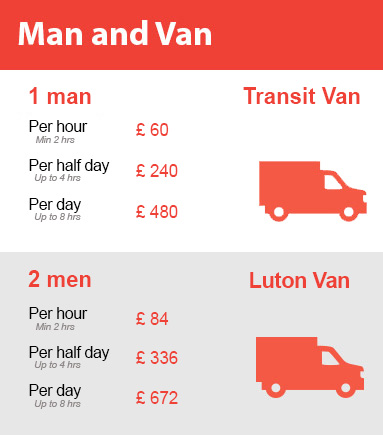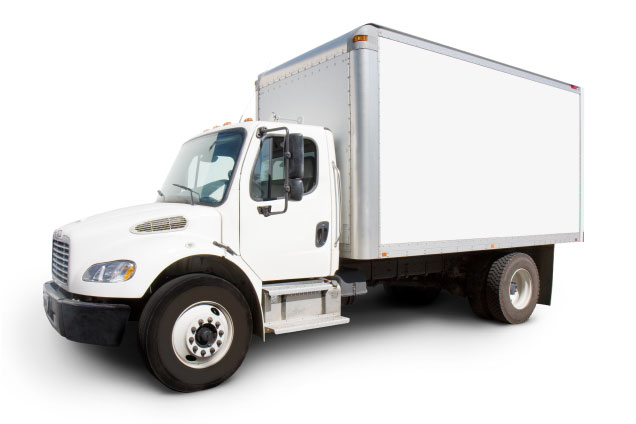Expert Advice on Lifting Heavy Objects Solo
Posted on 15/06/2025
Expert Advice on Lifting Heavy Objects Solo
Lifting heavy objects by yourself isn't just a test of strength--it's a serious safety concern that requires proper technique, tools, and preparation. Whether you're rearranging furniture, moving house, or handling large packages at work, knowing how to handle heavy lifting without assistance is crucial. This in-depth guide features expert tips on solo heavy object lifting, offering vital advice, proven methods, and practical safety strategies for your next big move.

Why Proper Heavy Lifting Matters
Lifting heavy objects without proper care can lead to strains, back injuries, and accidents. According to the Bureau of Labor Statistics, improper lifting is a leading cause of workplace musculoskeletal disorders. But these risks aren't exclusive to warehouses and loading docks; they're just as common during household moves and everyday chores.
- Injury Prevention: The right technique keeps your body safe.
- Efficiency: Smart lifting reduces fatigue and gets the job done faster.
- Item Protection: Careful handling avoids damage to your belongings.
Preparation: Before You Lift
Before you attempt to move a heavy item alone, proper preparation is key. Take time to plan, assess, and gear up.
1. Assess the Object and Your Surroundings
- Weight and Size: Estimate if the item is manageable for one person. If in doubt, don't risk injury--seek help or use equipment.
- Shape and Grip: Identify handles, protruding edges, and surfaces that provide a safe, secure hold.
- Pathway: Clear the route you'll take from hazards and obstacles. Ensure floors are dry and free of tripping risks. Always plan your path in advance!
2. Dress Appropriately
- Wear supportive footwear with non-slip soles to maintain good traction.
- Avoid loose clothing that can catch on objects or impede movement.
- Work gloves are recommended for a better grip and protection.
3. Warm Up Your Body
Lifting heavy objects strains muscles, especially when moving solo. Warm up with light aerobic activity--march in place, arm circles, gentle squats--to prepare your body, enhance circulation, and reduce injury risk.
Correct Techniques for Lifting Heavy Items Solo
Mastering safe lifting techniques when alone is essential. Use these expert-backed steps every time:
- Position Yourself: Stand close to the object with feet shoulder-width apart. Distribute your weight evenly.
- Bend at the Knees, Not the Waist: Squat down, keeping your back straight and chest forward. Your hips and knees--not your back--should bear the load.
- Secure the Grip: Grasp the object firmly with both hands. If there are handles or recessed grips, use them for added stability.
- Lift with Your Legs: Push through your heels to stand, engaging your thigh and glute muscles. Keep the object close to your body to minimize strain on your spine.
- Keep Your Back Neutral: Don't twist or arch. Turn by moving your feet, not your torso, if you need to change direction.
- Carry Close and At Waist Height: The closer the load is to your body's center, the easier it is to control.
- Set It Down Safely: Reverse the lifting steps: bend at the knees, maintain a straight back, and gently lower the object. Avoid dropping or slamming it down.
Technique Tips from Professional Movers
- "Never rush. Even seasoned movers take their time with heavy, awkward items."
- "Test the weight before fully committing. Give it a small nudge or lift one corner first."
- "Break big loads into smaller pieces if possible--remove drawers, detach legs, or empty contents."
- "Use your legs, not your back, every single time."
Assistive Devices to Make Solo Lifting Easier
Using the right tools for single-person heavy lifting can dramatically reduce your risk of injury and make the job more manageable.
1. Dollies and Hand Trucks
These wheeled platforms are perfect for moving boxes, large appliances, or stacks of heavy items. Make sure to:
- Secure the load with straps or bungee cords.
- Tilt back slowly and maintain control when moving up or down stairs.
2. Furniture Sliders
Place these pads under furniture legs or corners to glide objects across carpet or hardwood. Avoid lifting entirely on smooth floors by sliding instead.
3. Lifting Straps and Harnesses
These wearable devices help distribute weight evenly across your body and provide leverage, especially for awkward or bulky objects.
4. Portable Ramps
If you need to move heavy objects up steps, use a portable ramp to roll items safely and minimize lifting.
5. Pry Bars and Levers
For stubborn, heavy loads, a pry bar can help you lift the edge and slide in a dolly or slider--reducing the need to lift everything at once.
Ergonomics and Body Mechanics: Safeguarding Your Health
Proper body mechanics aren't just for professionals; anyone lifting heavy on their own should know these essentials:
- Keep Your Back Straight: Maintain a neutral spine; do not hunch or arch during the lift.
- Breathe Out As You Lift: Holding your breath increases blood pressure and tire you faster. Exhale during exertion.
- Set Down Often: If possible, take breaks and rest the object on intermediate surfaces.
- Pivot With Your Feet: Step around rather than twist your back while holding something heavy.
Common Mistakes When Lifting Heavy Objects Alone
Even experienced lifters can make errors. Avoid these pitfalls for a safer solo lifting experience:
- Attempting Loads You Cannot Handle: Know your limits--there's no shame in asking for help or using equipment.
- Poor Planning: Rushing without clearing a path or prepping the area can cause accidents.
- Improper Technique: Rounding your back or lifting with the arms only is a recipe for injury.
- Ignoring Signs of Fatigue: Stop immediately if you feel pain, dizziness, or muscle strain.
Special Considerations for Different Types of Objects
Furniture
- Remove legs, cushions, and drawers to lighten the load.
- Stand mirrors or flat items vertically for easier carrying.
Appliances
- Use a hand truck or dolly with appliance straps.
- Keep the unit upright to avoid internal damage.
Boxes and Containers
- Fill boxes so they're heavy but not unmanageable--no more than 40 pounds.
- Grip from the bottom and sides for stability.
When to Seek Professional Help
Not everything should be moved alone. Professional movers or specialized lifting teams have equipment, training, and experience. Call for backup when:
- The object weighs more than you can lift safely (usually over 50 lbs for most people).
- Objects are awkward or have no secure grip points.
- Stairs or other challenging terrain make lifting riskier.
- You have medical conditions affecting your back, knees, or overall strength.
Post-Lifting Safety and Recovery
After lifting heavy objects solo, prioritize your health:
- Apply ice or heat if you notice minor aches or swelling.
- Perform gentle stretches to relieve tension.
- Rest; listen to your body for unusual pain or discomfort.
- Stay hydrated to aid muscle recovery.
If you experience severe pain, numbness, or immobility, seek medical attention immediately.

Frequently Asked Questions About Solo Heavy Lifting
Is it safe to lift heavy objects by myself?
It can be safe if you use proper technique, equipment, and know your limits. Don't risk injury--when in doubt, get help.
What is the maximum weight I should lift alone?
Most health guidelines recommend limiting solo lifts to no more than 40-50 pounds, depending on your physical condition. Use assistive devices for anything heavier.
How can I improve my lifting strength?
Engage in regular strength training focusing on legs, core, and back muscles. Stretch often and practice good form during all lifting activities.
Conclusion: Lift Heavy, But Lift Smart
Solo lifting of heavy objects is sometimes unavoidable--but it doesn't have to be dangerous. Expert advice on single-person heavy lifting combines careful planning, the right equipment, and a focus on safety. Pay attention to your body, use smart lifting techniques, and never hesitate to ask for help when needed. With these practices, you can protect your muscles, your home, and your peace of mind, every time you tackle a challenging lift.
Remember: Your health is more important than saving a few minutes or dollars. Practice safe lifting, always.





